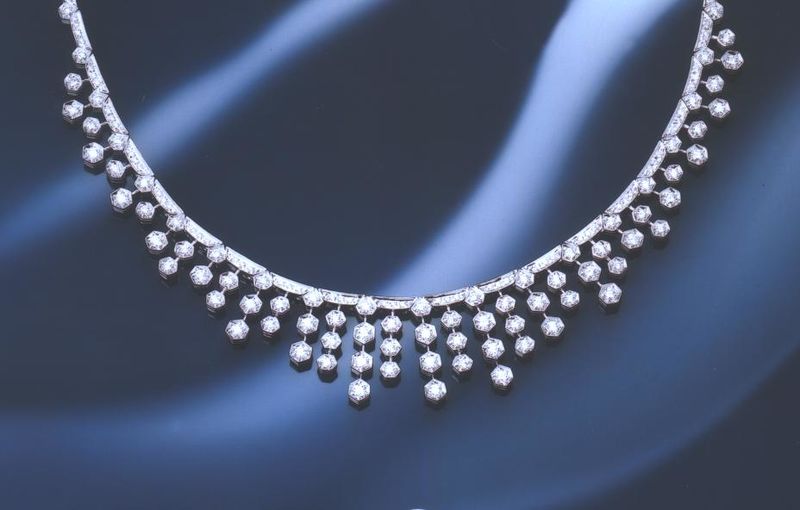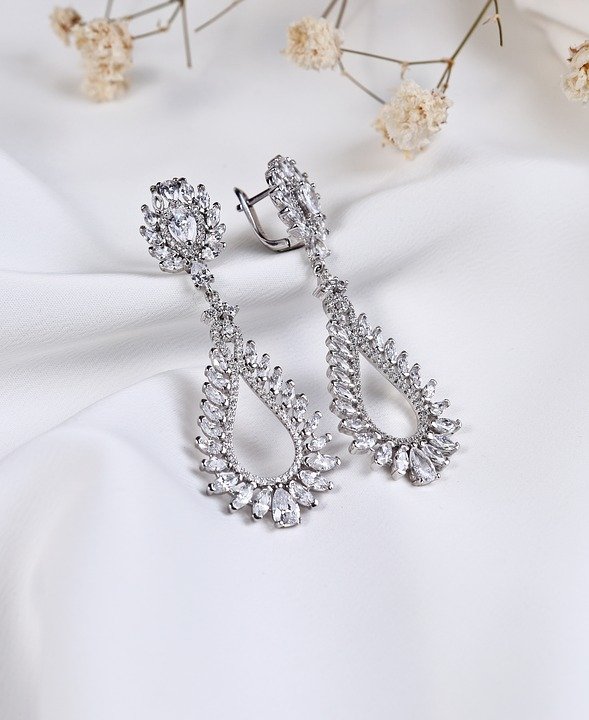There are many people allergic to specific types of metals, which inhibits them from wearing jewelry. But you don’t have to sacrifice fashion, style and accessorizing just because you experienced some allergic reactions in the past. What you need to do is to be smart about your jewelry material of choice.
Also, some signs thought as allergies aren’t really allergies. For instance, some people experience staining on the skin. However, this discoloration is only caused by reaction of certain metals against the skin because of oxidation from perspiration. Real allergies can cause the skin to itch and turn red, and sometimes break out into rashes. Any part of the body can be affected by a jewelry allergy – you can have rashes, itchiness, swelling or blisters on the neck, wrist and earlobes where the jewelry lies, but you can also have these symptoms to any part the jewelry has touched. If you experience these things but don’t want to give up wearing metallic jewelry, you need to switch to hypoallergenic.
What is hypoallergenic jewelry?
This type of jewelry is specifically made for people who experience allergic reactions to certain types of metals like nickel, copper or any non-pure metal. It pays to know if a jewelry is nickel-free, as nickel is a common allergen when it comes to metals.
To make metal hypoallergenic, these must be made of pure metals. Before you buy a hypoallergenic jewelry, check out this guide first (https://brightwatercove.com/guide-to-hypoallergenic-jewelry/).
What can be done about allergic reactions to jewelries?
To avoid allergy symptoms, steer clear of plated pieces or pieces made of alloy, like German silver, nickel silver and costume jewelry, as these things rely heavily on nickel as filler, since it’s cheap. Always keep your jewelry clean and free of tarnish. You can consider asking a jeweler if a protective layer of metal or film can be added to your jewelry to prevent skin irritations.
Lastly, what you can do is to seek out jewelry pieces that are hypoallergenic. Consider investing in high-quality pieces made of pure metals rather than alloy, so you can wear your jewelry comfortably as long as you want.
Is sterling silver hypoallergenic?
The answer to this question is, it depends. Genuine sterling silver is an almost pure silver, because to get the label “sterling,” it must be at least 92.5% silver. The remaining 7.5% can be filled in by other types of metal, and most of the time, it’s copper. Copper is fine because it’s also a non-allergenic metal. Silver tarnishes easily, so it is often plated with rhodium to keep it shiny. If you have metal allergies, going for genuine sterling silver can be a great option.
However, there are less-than-reputable jewelry makers that will mix in cheaper options like nickel. Around 5-10% of people in a population has a nickel allergy, which is the most common metal allergy on skin.
Silver jewelry findings can also be silver-plated. Some manufacturers label it as such, while some label their “silver” jewelry that’s actually just silver plated. Silver plated means there’s a thin layer of silver coating over the base metal, which can flake or scratch off over time, exposing your skin to whatever metal is underneath. Usually, it’s made of inexpensive brass or cheap base metals. Genuine sterling silver has a weight to it and can be pricier, so if the price of that “silver” is too good to be true, beware – it can be only silver-plated.
Another label on silver jewelry is “silver-filled.” This term can be confusing, as you may think that the silver is in the middle of the jewelry, but this is not the case. This means that the sterling silver is applied via heat treatment to a less expensive metal. It’s a thicker layer of silver plating, which will not wear off easily. For people with mild metal allergies, this kind of silver jewelry can be a great option for years until the silver wears away.
Here are other metals to consider if you are looking for hypoallergenic jewelry:
Gold
Gold is a great hypoallergenic option. It is measured by different karat (k) counts. 24k is the highest karat count that is pure gold. However, this high concentration of gold is too soft for jewelry, so you can find jewelry made of 10k gold, 14k gold or 18k gold. Most of the time, you will find 14k gold, which means that 14 out of 24 karats are pure gold, while the other 10 parts are made of other metals depending on the color of the gold. Rose gold is mixed with copper, while white gold is made of palladium. Depending on the wearer’s allergies, 14k gold can be enough to reduce allergic reactions. A jewelry with higher gold content will be even better.
There are jewelries that are gold-plated or gold-filled, similar to silver. If you are to choose between these two, it’s best to pick a gold-filled jewelry because it has a thicker gold plating, which will last for many years.
Platinum
Platinum is one of the best nickel-free metals used for making jewelry, but it’s more expensive and not as accessible as silver. It tends to be more expensive than other metals, but it rarely tarnishes and it won’t leave you with an itchy rash. It’s also one of the strongest and most durable metals so, investing in a platinum jewelry is an investment that will last for a lifetime.
Platinum is usually alloyed with iridium, which is a hypoallergenic metal and therefore a safer option for allergy sufferers.
Stainless steel
Stainless steel is often made of an alloy that contains steel, chromium and nickel. Sometimes, the nickel content is too high for people with metal allergies to wear consistently, but it does come in different grades with higher and lower nickel and carbon contents. Stainless steel is used in surgical instruments, so it is resistant to corrosives and rust. Stainless steel jewelry is pretty accessible, and it’s also very cheap.
If you are looking for a stainless steel jewelry that is hypoallergenic, look for a 430 stainless or XC45 Steel. This has less than 1% nickel, whereas the 304 stainless will have over 10% nickel.
Rhodium
Rhodium is in the same metal family as platinum, and it’s a hypoallergenic metal also. It is used for finishing white gold and for keeping their long-term shine and luster. It’s more expensive than other metals, but it doesn’t tarnish and won’t make you feel itchy.
Some jewelry manufacturers like Eros Milano of Italy are also using rhodium for finishing sterling silver as well. This makes a cheaper rhodium jewelry, compared to the pricier white gold.
Niobium
Similar to titanium, niobium is a metal frequently used in medical implants, which makes it a great choice for hypoallergenic jewelry. It’s highly resistant to corrosion. It’s not painted nor plated, so the color of the jewelry will not flake nor wear down. This color – which can range from bright blues to yellows, or more natural black, gray and copper tones – is adhered to the metal by anodizing via an electric bath. It is not mixed with nickel or lead, so it is safe for people with metal allergies.
Argentium
Argentium is a type of silver that is hypoallergenic, and uses geranium as a hardener. This leads to a slightly brighter silver color and its tarnish-resistant properties. An argentium sterling silver is 100% recycled, which means it’s environmentally-friendly.



